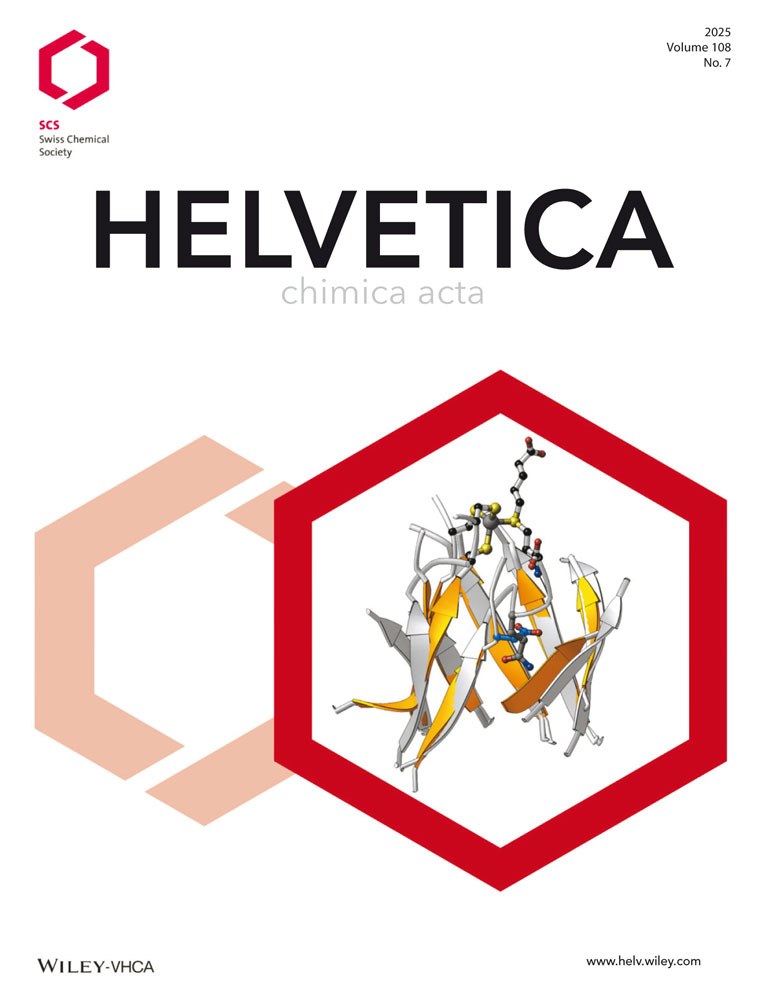Exploring the Border between Concerted and Two-Step Pathways of 1,3-Dipolar Cycloadditions of Organic Azides to Cyclic Ketene N,X-Acetals. – Synthesis and 15N-NMR Spectra of Zwitterions and Spirocyclic Cycloadducts†
Most of the results are parts of the Ph. D. Theses by M. Ach (1992), T. Hergenröther (1992), and D. Regnat (1990), and the Diploma Thesis (1990) and unpublished results (1991–92) by J. Balthasar, Universität Würzburg.
Abstract
Cyclic ketene N,X-acetals 1 are electron-rich dipolarophiles that undergo 1,3-dipolar cycloaddition reactions with organic azides 2 ranging from alkyl to strongly electron-deficient azides, e.g., picryl azide (2L; R1=2,4,6-(NO2)3C6H2) and sulfonyl azides 2M–O (R1=XSO2; cf. Scheme 1). Reactions of the latter with the most-nucleophilic ketene N,N-acetals 1A provided the first examples for two-step HOMO(dipolarophile)–LUMO(1,3-dipole)-controlled 1,3-dipolar cycloadditions via intermediate zwitterions 3. To set the stage for an exploration of the frontier between concerted and two-step 1,3-dipolar cycloadditions of this type, we first describe the scope and limitations of concerted cycloadditions of 2 to 1 and delineate a number of zwitterions 3. Alkyl azides 2A–C add exclusively to ketene N,N-acetals that are derived from 1H-tetrazole (see 1A) and 1H-imidazole (see 1B,C), while almost all aryl azides yield cycloadducts 4 with the ketene N,X-acetals (X=NR, O, S) employed, except for the case of extreme steric hindrance of the 1,3-dipole (see 2E; R1=2,4,6-(tBu)3C6H2). The most electron-deficient paradigm, 2L, affords zwitterions 16D,E in the reactions with 1A, while ketene N,O- and N,S-acetals furnish products of unstable intermediate cycloadducts. By tuning the electronic and steric demands of aryl azides to those of ketene N,N-acetals 1A, we discovered new borderlines between concerted and two-step 1,3-dipolar cycloadditions that involve similar pairs of dipoles and dipolarophiles: 4-Nitrophenyl azide (2G) and the 2,2-dimethylpropylidene dipolarophile 1A (R, R=H, tBu) gave a cycloadduct 13 H, while 2-nitrophenyl azide (2 H) and the same dipolarophile afforded a zwitterion 16A. Isopropylidene dipolarophile 1A (R=Me) reacted with both 2G and 2 H to afford cycloadducts 13G,J) but furnished a zwitterion 16B with 2,4-dinitrophenyl azide (2I). Likewise, 1A (R=Me) reacted with the isomeric encumbered nitrophenyl azides 2J and 2K to yield a cycloadduct 13L and a zwitterion 16C, respectively. These examples suggest that, in principle, a host of such borderlines exist which can be crossed by means of small structural variations of the reactants. Eventually, we use 15N-NMR spectroscopy for the first time to characterize spirocyclic cycloadducts 10–14 and 17 (Table 6), and zwitterions 16 (Table 7).




